This week we will do a variety of activities to develop an understanding of the way energy is used by biological organisms.
Photosynthesis
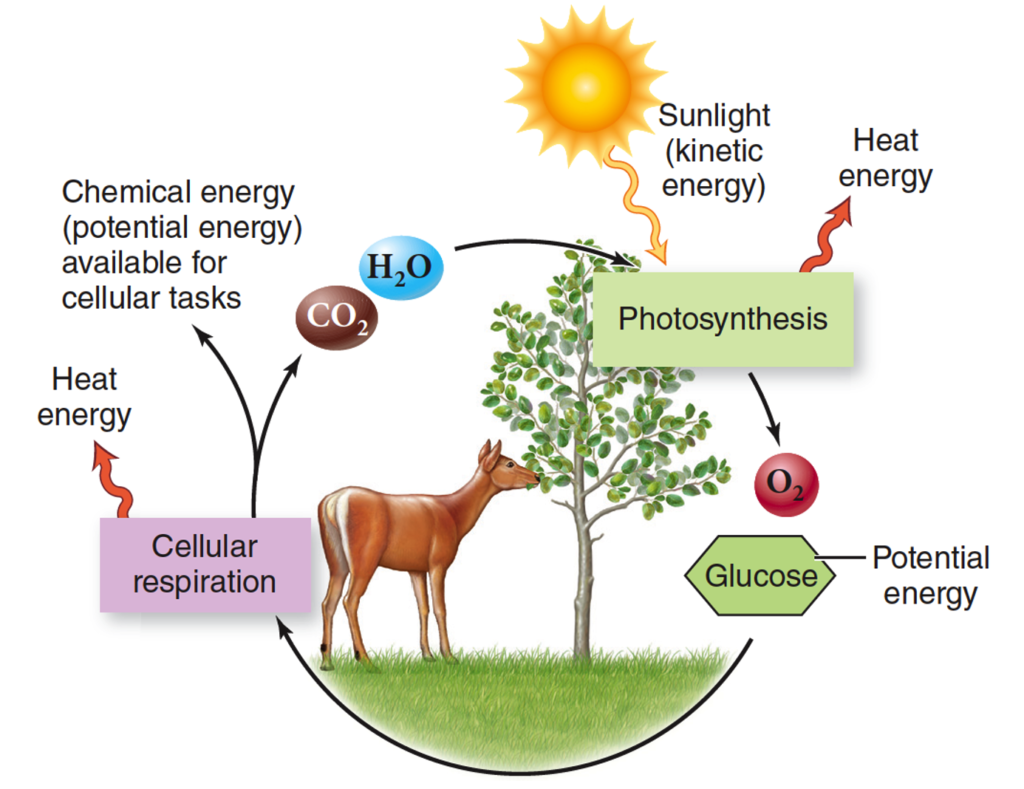
Virtually every task performed by living organisms requires energy. It seems obvious that energy is needed to perform heavy labor and exercise, but humans also use a great deal of energy while thinking, and even during sleep. In fact, the living cells of every organism constantly use energy. Nutrients and other molecules can be imported, metabolized (broken down) and synthesized into new molecules. Complex carbohydrates are broken down into simple sugars that the cell uses for energy. Cellular processes require a steady supply of energy, but from where, and in what form, does this energy come? How do living cells obtain energy, and how do they use it?
Photosynthesis is the process by which plants use solar energy, water, and carbon dioxide to produce food. Plants use the food they make for growth and for carrying out other life processes. Sunlight is the natural energy source for photosynthesis. White light from the sun is a mixture of all colors of the light spectrum: red, orange, yellow, green, blue, and violet.
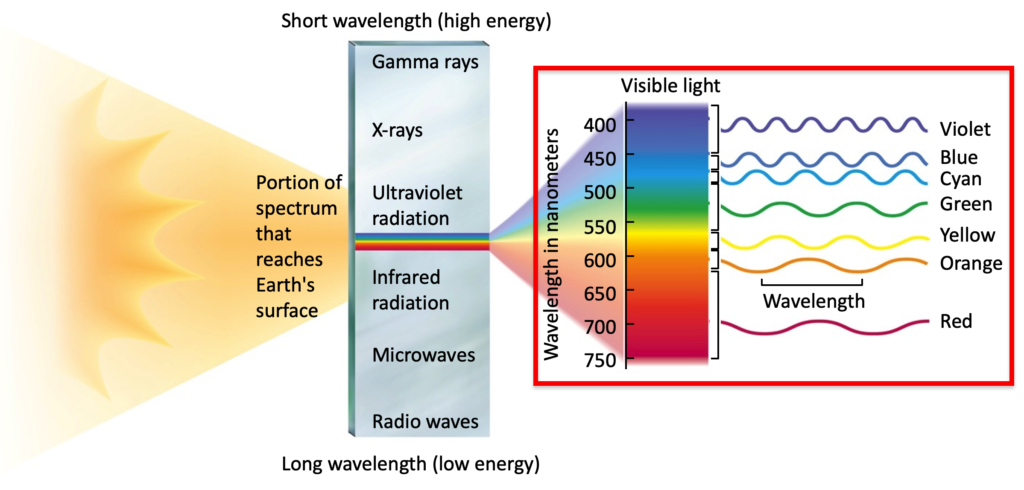
Light can either be absorbed or reflected by substances called pigments. Most plants are green because the pigment chlorophyll reflects green and yellow light waves, and absorbs the other colors of the spectrum.
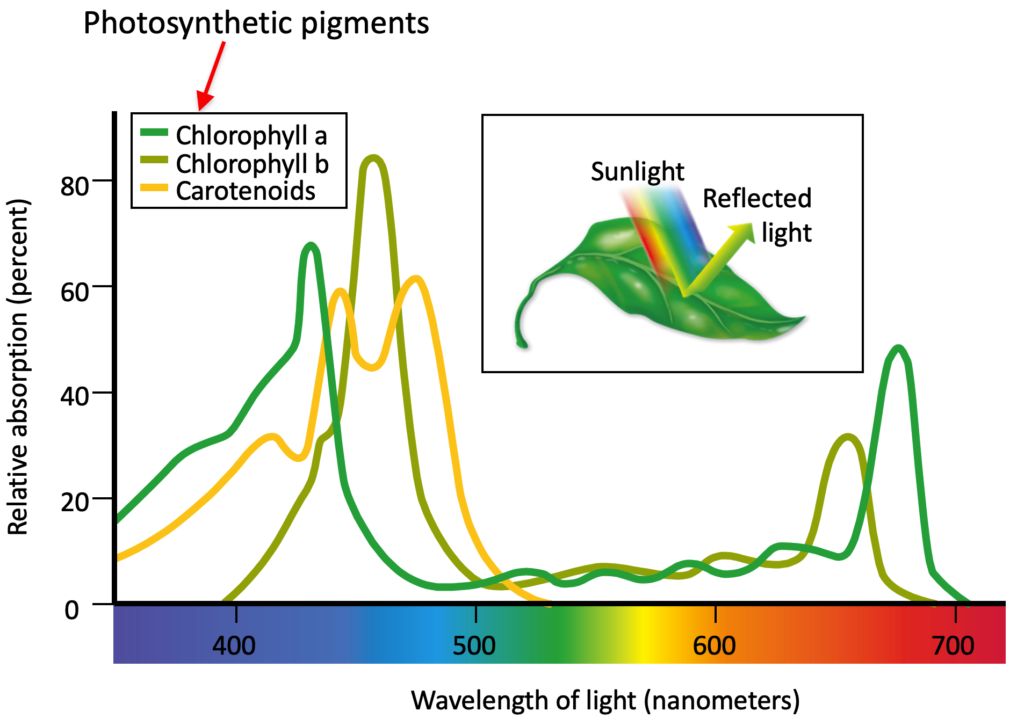
Heart Rate
Aerobic exercise – exercise that uses oxygen – includes activities such as brisk walking or running, swimming, dancing, and bicycling. Aerobic exercise helps improve the fitness of your heart and its associated blood vessels, thereby improving your cardiovascular fitness. Your heart rate, or pulse, is the number of times your heart beats per minute. Understanding your heart rate and measuring how it changes based on your level of activity can help you determine how hard your heart has to work to supply oxygen to your tissues for cellular respiration.
The resting heart rate is a measure of how quickly your heart beats when you are not physically active (which means your heart is pumping the lowest amount of blood required). The typical adult has a resting heart rate between 60 and 85 beats per minute (bpm); highly trained athletes may have rates of as low as 40 bpm. As a person becomes more physically fit, the resting heart rate should decrease.
The best time to check your resting heart rate is when you first wake in the morning, before you get out of bed (especially before having caffeine, which can increase your heart rate). Today, we asked you to measure your resting heart rate before performing the Bromothymol blue experiment, before you had hopefully been sitting relatively quietly. Remember, though, that this was not the optimal time to measure resting heart rate, so your actual rate is probably somewhat lower. Also remember that many factors can influence heart rate, including age, caffeine use, fitness and activity levels, overall health, weight, medications, and body position (standing vs lying down).
Knowing how to monitor your heart rate when you are physically active can also be useful. It allows you to determine:
- If you are working out too intensely, which is dangerous for your heart
- If you are not working hard enough to get full benefit of the exercise you performed
To maximize the benefits of your aerobic workout, it’s recommended that you exercise for at least 20 to 30 minutes in your “target zone” – a range from 50% to 85% of your maximum heart rate. You can check the chart below to get a general idea of where your maximum heart rate lies. In a few minutes, you’ll do some more personalized calculations. It’s important to note that maximum heart rate is just a guide. You may have a higher or lower maximum heart rate, sometimes by as much as 15 to 20 beats per minute. If you want a more definitive range, consider discussing your target heart rate zone with an exercise physiologist or a personal trainer.
| Average Heart Rates by Age | ||
| Age | Target Zone (50 – 85%) bpm | Average Maximum Rate (100%) |
| 20 years | 100 – 170 | 200 |
| 30 years | 95 – 162 | 190 |
| 35 years | 93 – 157 | 185 |
| 40 years | 90 – 153 | 180 |
| 45 years | 88 – 149 | 175 |
| 50 years | 85 – 145 | 170 |
| 55 years | 83 – 140 | 165 |
| 60 years | 80 – 136 | 160 |
| 65 years | 78 – 132 | 155 |
| 70 years | 75 – 128 | 150 |
So, how hard should you be exercising? The Department of Health and Human Services recommends that most healthy adults should get at least 150 minutes a week of moderate aerobic activity — such as brisk walking, swimming or mowing the lawn — or 75 minutes a week of vigorous aerobic activity — such as running or aerobic dancing. You can also do a combination of moderate and vigorous activity. It’s best to do this over the course of a week. Over time, your heart rates (at rest, and while performing activity) may decrease, as the fitness of your heart increases.
When you’re doing aerobic activity, such as walking or biking, exercise intensity correlates with how hard the activity feels to you. Exercise intensity is also shown in your breathing and heart rate, whether you’re sweating, and how tired your muscles feel. Here are some clues to help you judge your exercise intensity.
During moderate activity (~ 50 to 70 percent of your maximum heart rate):
- Your breathing quickens, but you’re not out of breath.
- You develop a light sweat after about 10 minutes of activity.
- You can carry on a conversation, but you can’t sing.
During vigorous activity (~ 70 to 85 percent of your maximum heart rate):
- Your breathing is deep and rapid.
- You develop a sweat after only a few minutes of activity.
- You can’t say more than a few words without pausing for breath.
You’ll get the most from your workouts if you’re exercising at the proper exercise intensity for your health and fitness goals. If you’re not feeling any exertion or your heart rate is too low, pick up the pace. If you’re worried that you’re pushing yourself too hard or your heart rate is too high, back off a bit. Interestingly, research shows that interval training, which includes short bouts (around 15 to 60 seconds) of higher intensity exercise alternated with longer, less strenuous exercise throughout your workout, is very effective at increasing your cardiovascular fitness and promoting weight loss.
In all cases, speak with your doctor before starting a vigorous exercise program.
Heart rate information and calculations adapted from the Mayo Clinic “Healthy Lifestyle Fitness”
Cellular Respiration
In the process of photosynthesis, plants and other photosynthetic producers take in solar energy (light) and convert it into chemical energy (glucose), where the energy is stored in high-energy phosphate bonds. When sugars are consumed as food, organelles called mitochondria in the cells use oxygen to convert the the energy stored inside of glucose into ATP, which can then be used to power many chemical reactions in the cell. When this process – called cellular respiration – occurs in the body, oxygen enters the cells when it is breathed in through the lungs and transported by red blood cells. In addition to creating ATP, cellular respiration releases carbon dioxide, which is then carried through the blood to the lungs and exhaled. You can measure the rate your cells carry out cellular respiration by measuring how quickly you produce carbon dioxide.
There are three stages to cellular respiration:
Glycolosis
Nearly all of the energy used by living cells comes to them in the bonds of the sugar glucose. Glycolysis is the first step in the breakdown of glucose to extract energy for cellular metabolism. In fact, nearly all living organisms carry out glycolysis as part of their metabolism. The process does not use oxygen directly and therefore is termed anaerobic. Glycolysis takes place in the cytoplasm of both prokaryotic and eukaryotic cells. Glycolysis begins with the six-carbon ring-shaped structure of a single glucose molecule and ends with two molecules of a three-carbon sugar called pyruvate. Glycolysis consists of two distinct phases. The first part of the glycolysis pathway traps the glucose molecule in the cell and uses energy to modify it so that the six-carbon sugar molecule can be split evenly into the two three-carbon molecules. The second part of glycolysis extracts energy from the molecules and stores it in the form of ATP and NADH—remember: this is the reduced form of NAD.
Citric Acid Cycle (aka Krebs Cycle)
If oxygen is available, aerobic respiration will go forward with the Citric Acid Cycle, a central driver of cellular respiration. In eukaryotic cells, the pyruvate molecules produced at the end of glycolysis are transported into the mitochondria, which are the sites of cellular respiration. There, pyruvate goes through a series of steps that results in the generation of a nuymber of reduced electron carriers. These will be passed on to the next stage, and will generate most of the ATP produced by cellular respiration.
Electron Transport Chain
The electron transport chain is the last stage of aerobic respiration and is the only part of glucose metabolism that uses atmospheric oxygen. In animals (including humans), oxygen enters the body through a variety of respiratory systems, including breathing. Electron transport is a series of redox reactions that resembles a relay race or bucket brigade in that electrons are passed rapidly from one component to the next, to the endpoint of the chain where the electrons reduce molecular oxygen and, along with associated protons, produces water. The electron transport chain is an aggregation of four complexes composed of proteins and their associated electron carriers. The electron transport chain is present with multiple copies in the inner mitochondrial membrane of eukaryotes and within the plasma membrane of prokaryotes.
Assessing Nutritional Data
The metabolic rate of an individual is a measure of his or her energy use, and changes according to activity level. A measure of the energy used by an awake, alert, but not physically active person is known as the basal metabolic rate (BMR), which differs according to height, weight, age, and sex. The number of calories actually burned throughout the day will be larger than this number, proportional to the amount of exercise and other activity performed.
The average BMR for humans is:
1 cal/gram/hr = 1600 kcal/day

This is based on a person weighing 140 pounds (66,600 grams). Other species have different metabolic rates. For example, shrews (small mammals that look like mice, but are not closely related to them) have a BMR that is 35x higher than humans. Shrews must consume their own body weight in food every day to have enough energy to survive.
Even among humans, BMR can vary greatly among individuals. Males typically have higher BMR than females, mostly because males tend to have more muscle mass, and burn more energy to produce the hormone testosterone.
- Females average ~1400 kcal/day
- Males average ~1700 kcal/day
There is more to a healthy diet than just calories. Key Recommendations from the current USDA Dietary Guidelines suggest that in order to support a healthy body weight and reduce the risk of chronic disease, individuals should consume a healthy eating pattern that accounts for all foods and beverages within an appropriate calorie level.
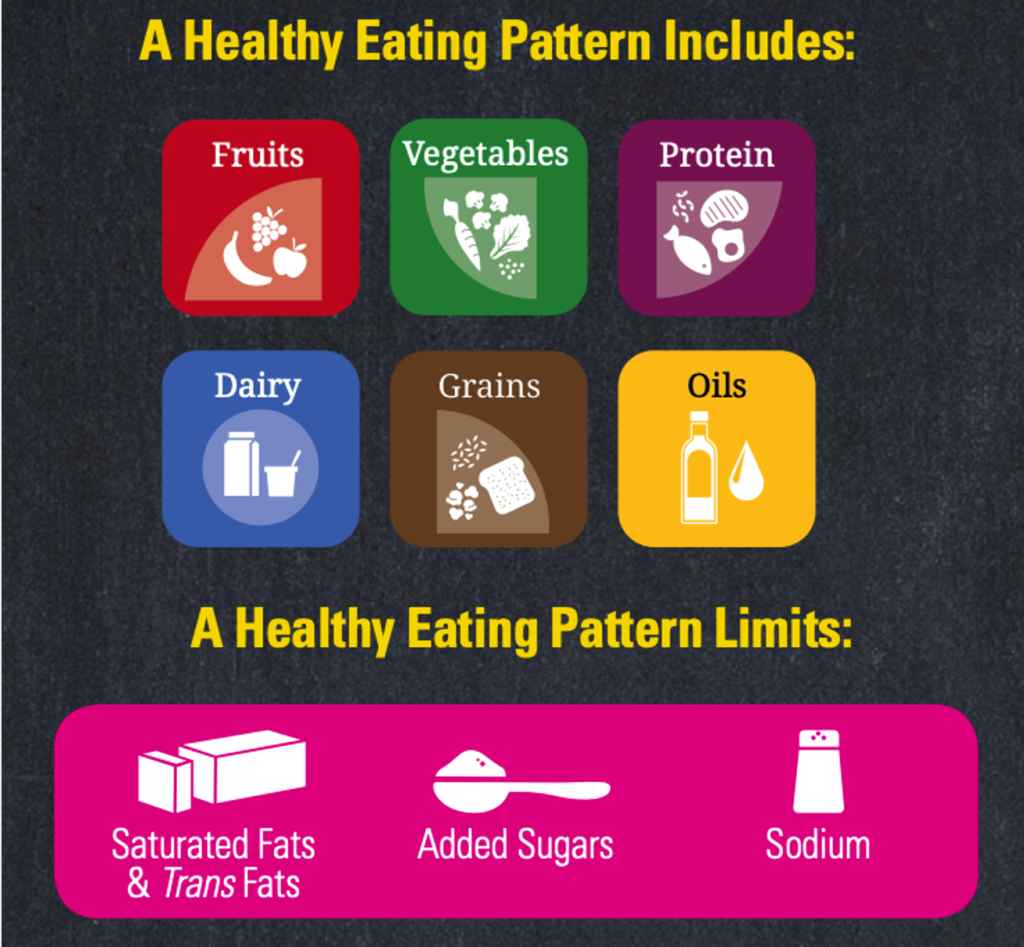
More specifically, the guidelines recommend including:
- A variety of vegetables: dark green, red and orange, beans and peas, and starchy
- Fruits, especially whole fruits
- Grains, at least half of which are whole grains
- Fat-free or low-fat dairy, including milk, yogurt, cheese, and/or fortified soy beverages
- A variety of protein foods, including seafood, lean meats and poultry, eggs, beans and peas, and nuts, seeds, and soy products
- Healthy oils

Water Soluble Vitamins: B complex; C 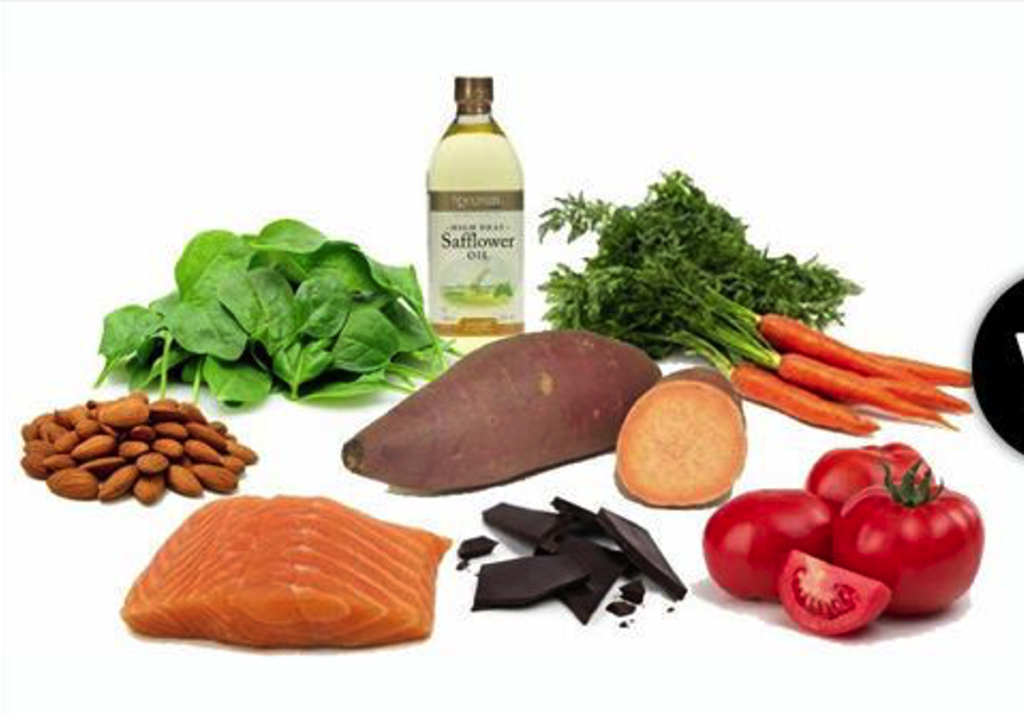
Fat Soluble Vitamins: A, D, E, K
A healthy eating pattern also limits saturated fats and trans fats, added sugars, and sodium:
- Less than 10 percent of calories per day from added sugars
- Less than 10 percent of calories per day from saturated fats
- Less than 2,300 milligrams (mg) per day of sodium
In a healthy diet, the percentage of calories obtained from protein should be between 10% and 35% (or 0.8 grams per 2.2 pounds of body weight). The percentage of calories from fat should be between 10% and 30%. The remaining calories (ideally 45% to 65%) should be provided by carbohydrates.
Micronutrients such as vitamins and minerals are also important to consider. These are substances that are necessary in small amounts in order for your body to function properly. Minerals are inorganic substances, such as calcium and iron. Vitamins are organic substances that are categorized into two broad types. Water soluble vitamins are easily absorbed by the body, and not stored in large quantities. On the other hand, fat soluble vitamins can be stored in the body’s fatty tissues, and can lead to toxicity if excessive quantities of these vitamins are ingested over time. Both vitamins and minerals can be obtained from food and can also be added to the diet through nutritional supplements if needed.
Overall, the Department of Health and Human Services recommends that every day you should choose a variety of nutrient-dense foods from each food group in the recommended amounts.
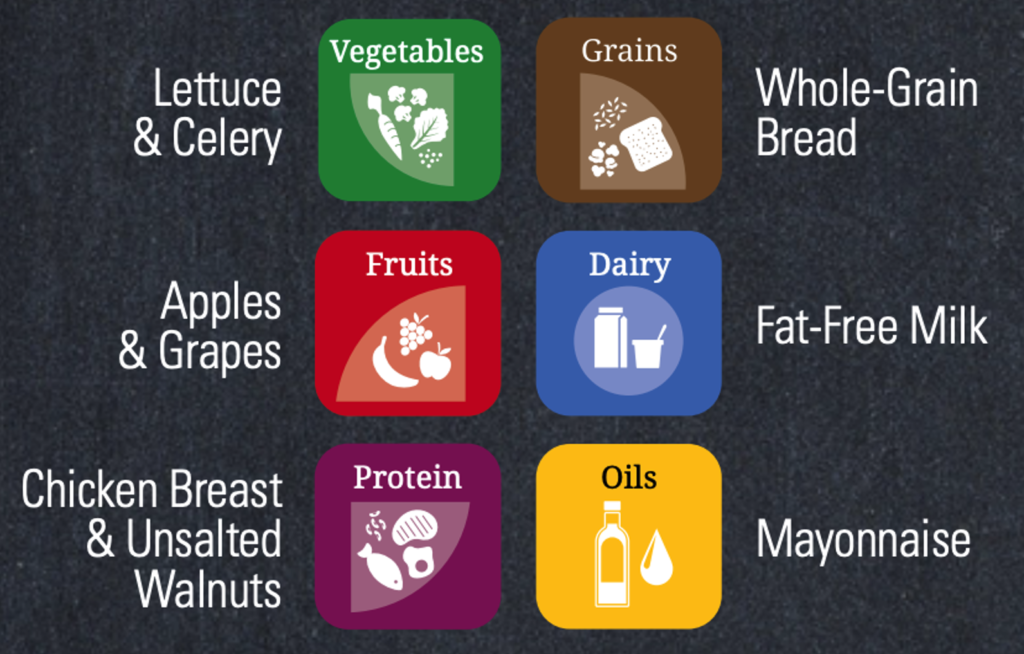
If you or anyone you know is struggling with disordered eating or an eating disorder,
resources can be found here: https://www.nceedus.org/
Text adapted from U.S. Department of Health and Human Services: https://health.gov/dietaryguidelines/2015/guidelines/